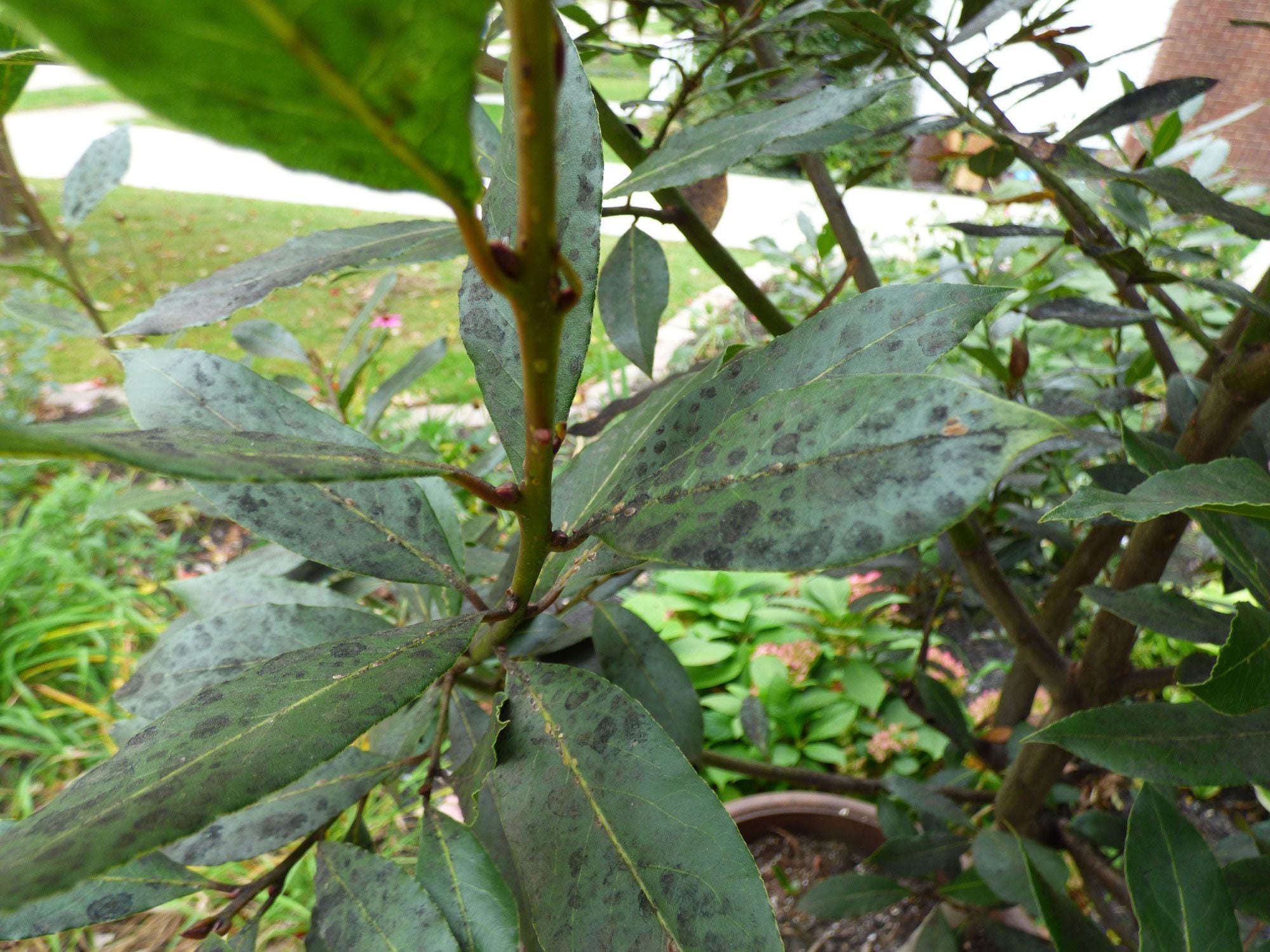
Growing bay leaf trees have been cultivated for centuries for their subtle flavor, aroma, and medicinal uses. Sweet bay leaf spots may make one cringe regarding the wisdom of using them in culinary creations such as soups, stews, brines, shellfish boils, and teas let alone for ornamental uses such as herbal wreaths, topiaries, or potpourri. So, let's take a look at the causes and care of bay leaf tree problems, such as black spots on bay leaves.
Bay Leaf Tree Care
Growing bay leaf trees requires a little patience as they are slow growing evergreens, although they may live for 40 years or longer and attain a height of 10 feet (up to 23 feet in the wild) (3-7 m.). Care of bay leaf trees is minimal when bearing in mind that Laurus nobilis is hardy in USDA zone 8, thrives in rich, well-drained soil (pH 6.2), dislikes overwatering, and should be brought indoors when the temperature dips in the fall months.
Sweet Bay Leaf Spots by Insects
A plague in the care of bay tree leaf problems are aphids, mites, and hard-shelled scales. Their honeydew causes sooty mold, giving the appearance of black spots when growing bay leaf trees. Care of bay tree leaf problems of this ilk require a strong blast of water to dislodge some of the marauders, followed by a treatment of insecticidal soap or neem oil. Both insecticidal soap and neem oil are safe to use and can be easily rinsed off the leaves before using in food. Several weekly applications may be needed to resolve black spots on bay leaves caused by insects.
Other Causes of Black Spots on Bay Leaves
If no evidence of insects is to be found, another cause for black spots on bay leaves may be leaf spot disease. Care of bay tree leaf problems caused by this involve primarily removing all the affected leaves and allowing the soil to dry between watering. Make sure the plant is not sitting in water and water at the base of the plant to allow leaves to remain dry. A bacterial or fungal infection such as phytophthora ramorum may additionally be creating sweet bay leaf spots. Care of bay leaf tree problems of this type again involves removing any infected leaves from the plant and surrounding area and burn or seal in a plastic bag for dispatch. Take care to have leaves dry by mid-morning, thereby discouraging a hospitable environment for spores to take hold. A sulfur spray may discourage any further infection and black spots on bay leaves. Although chemical control is not usually warranted, if you do decide to spray, spring is the optimal time at bud break during the growing season in 12 to 14 day intervals. Lastly, a possible cause of black spots on bay leaves may simply be sunburn. Moving the plant from indoors back outside too suddenly may burn the leaves as may a reflection from glass indoors. Always look into the simplest solution first such as too much sun or water or the need for repotting.
Sign up for the Gardening Know How newsletter today and receive a free copy of our e-book "How to Grow Delicious Tomatoes".

Amy Grant has been gardening for 30 years and writing for 15. A professional chef and caterer, Amy's area of expertise is culinary gardening.
